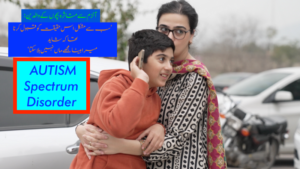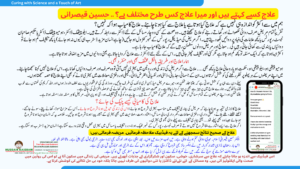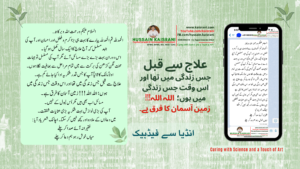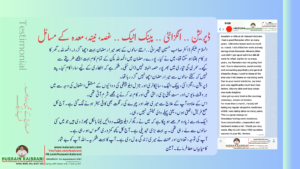— Homeopath Keith Souter discusses different types of guilt and gives keynotes for some important remedies. —
So full of artless jealousy is guilt,
It spills itself in fearing to be spilt.
William Shakespeare, Hamlet
It is the genius of William Shakespeare that we still see his plays performed four centuries after he died. His canon of plays covers virtually every human emotion. Incredibly, he gave textbook psychiatric descriptions of conditions centuries before psychiatry as a medical discipline was even conceived.
In Hamlet we see one of the greatest depictions of depression. Hamlet, Prince of Denmark suffers from melancholy, or as we now know it, depression. Yet the other theme of the play is guilt, an emotion experienced by Hamlet’s uncle, King Claudius, because he had killed his own brother and usurped the throne.
It is Gertrude, Hamlet’s mother who says the above lines in an aside to the audience. By ‘it’ she means that lacking sophistication, the guilty give themselves away by trying to hide their guilt. That is, their thoughts, moods, actions and behaviour will reveal their underlying guilt as they try to hide it.
And of course, in Macbeth, his other great play with guilt as a major theme, he gives us Lady Macbeth, whose guilty conscience drives her insane. It is interesting that Shakespeare wrote the play in 1605, the year of the Gunpowder Plot, when conspirators made an abortive attempt to blow up King James I and his parliament. He wrote it to show the fearful consequences of murdering a king. The murderers develop guilty consciences, which drive them to their doom.
Guilt the negative emotion
Everyone experiences guilt at times in their lives although it is not usually as catastrophic as in Shakespeare’s tragedies. Nonetheless, there are degrees to which it can be experienced. It is when it becomes a dominant emotion that is can affect one’s wellbeing and one’s emotional, psychological and physical health.
Putting it very simply, guilt is a feeling or thought that one has committed a wrong, or failed in a duty or obligation. Note that I said a thought or feeling. I say this because it can be either something that is known and thought about, or it can be an emotion that cannot be directly explained or rationalised.
Different disciplines attempt to explain it in their own way. For example, in psychoanalytic theory, Freud said it was the result of tension between the superego and the ego. Cognitive psychologists, on the other hand, would rather aver that it is thought that creates the emotion. If you are convinced that you have caused harm, or betrayed someone, or failed in a duty or moral obligation, then the negative feelings of guilt will follow.
Causes of guilt
As we know in homoeopathy there are many ways that people fall ill or experience unease or dis-ease. Our actions, our thoughts, our emotions can all have a bearing, as well as extraneous events or influences upon us, be they injuries, injustices, infections, poisons and so on. Add to that the effects of inherited predispositions or miasms and it can get very complex.
The limitations of length in an article such as this preclude an in-depth study of guilt. Besides, it is the aim to give a little practical help when guilt starts to show up when you take a case.
There are basically six main causes of guilt:
- Guilt about not living up to one’s own moral code – this can be a philosophical code that one has developed or a religion that one follows. This can be a very powerful influence, of course, and ay transgression of that code can torture the person.
- Guilt after actual direct harm caused to someone – this is when an action or a dereliction of some sort caused actual harm to another, or breached the person’s own sense of what s right and what is wrong. The guilt experienced may be justified at some level, but its importance and magnitude can escalate dramatically until it manifests itself in the person’s thoughts, behaviour and health.
- Guilt about something the person wants to do – this could be the guilty secret that people often have. It could be affection for someone that is beyond reach, such as a sibling’s partner, or a desire to have adultery, to steal or to commit a perceived ‘sin.’ It could also be a vice that one cannot give up, a habit that one cannot break, or doubts about one’s sexuality, gender or proclivity.
- Guilt about imagined harm – this can arise from an irrational belief that some action (or even some thought) ‘might’ have harmed others. For example, a belief that by refusing to lend someone money they stole from someone and ended up in trouble. Or it could be you stole a girlfriend from someone and caused the ‘injured’ party to sink into depression.
- Guilt about having let someone down – this is common in grief, when one often wishes one had behaved differently or done more for someone. People often wish that they had done something positive before the person died, or that they should have told them how they felt. It is common to think that an omission could have prevented them from dying. ‘If only I had done… something!
- Guilt about being more fortunate than others. This can occur in families or in circles of friends or in survivors of disasters. The roots of this type of guilt may go very deep and may in fact be miasmic, or represent ‘inherited guilt or ‘inherited sin.’
The life cycle
This heading may make you think of school biology lessons when you looked at the different life cycles of insects, fish, frogs and other creatures on the evolutionary ladder. I am not, however, using the term here in the same sense. I am using it as a model for a person’s life. This has nothing to do with their development with age, but is to do with the different levels or spheres that make up one’s life at any point in time. And you will see that there is a cycle involved, certainly in the manner in which a condition, virtually any chronic medical condition, can affect them.
I use this model in my practice when I am working with patients and want to give them strategies to deal with their condition. You can focus on the dominant thing in their life, or on the main reason that they have consulted you. Indeed, I run through it, it gives further room to explore their thoughts, emotions and actions.
Yet to use the biology analogy a little longer, you will learn a certain amount about fish by dissecting them to look at their internal organs. But you won’t know how they move and feed without studying them in water. And you won’t learn about their behaviour with other fish and predators unless you observe them in a realistic environment. Even then you will not get to know about them fully unless you just become a total observer of them.
So it is in homoeopathic medicine. In order to help someone you need to know as much as possible about their condition, their symptoms and the things that make their symptoms better or worse. And ideally you want to know about their habits, their diet, their desires, their fears, their relationships and so on. These are all areas that one will explore in taking a homoeopathic history.
There are six levels or spheres of life that we need to consider:
- Body – what physical symptoms are complained of? For example, pain, stiffness, tiredness or fatigue.
- Emotions – how does it make the person feel? For example, anxious, sad, depressed, angry or jealous of others who are not affected. But going deeper, what emotions are impinging adversely upon the person’s enjoyment of life. In terms of this article, is guilt something that the person is aware of?
- Mind – how it affects the type of thoughts the person has? For example, pessimistic thoughts, negative thoughts, self-defeating thoughts, guilty thoughts.
- Behaviour – how it makes the person behave? For example, isolating them by avoiding things or people. Or by developing habits, e.g. smoking, drinking, taking drugs, having affairs, becoming inactive.
- Lifestyle – how it affects the person’s ability to do things, their relationships, and also how events in their life impact on them.
Now take a look at Figure 1. You will see the five spheres starting with the Body sphere at the top. If you follow it clockwise you will see that it follows the order that I mentioned above – body, emotions, mind, behaviour, and lifestyle. And note the outer circle that encloses the whole structure. This represents the individual’s whole self, their life. In other words the five spheres all make up part of the individual’s experience of life.
Notice also that there are double-headed arrows between the spheres. The outer arrows represent the general progression, because the order represents the way that a condition will tend to impact on a person.
If we think of a simple condition like an arthritic hip, you can see what I mean. The condition produces physical or body symptoms in the form of pain and limitation of movement. If these symptoms persist for a while, which they do, of course, they tend to affect the individual emotionally. They will start to feel something about the symptoms or about the condition. The emotions then make you think in a particular way. The condition may come to dominate one’s thoughts, with worry about how it will progress, how it is going to impact on one’s wellbeing, work and family. This can affect one’s behaviour in that one may stop doing certain things or take up various habits, including taking prescription drugs. . Immobility leads to less fitness, less health conscious decisions.






